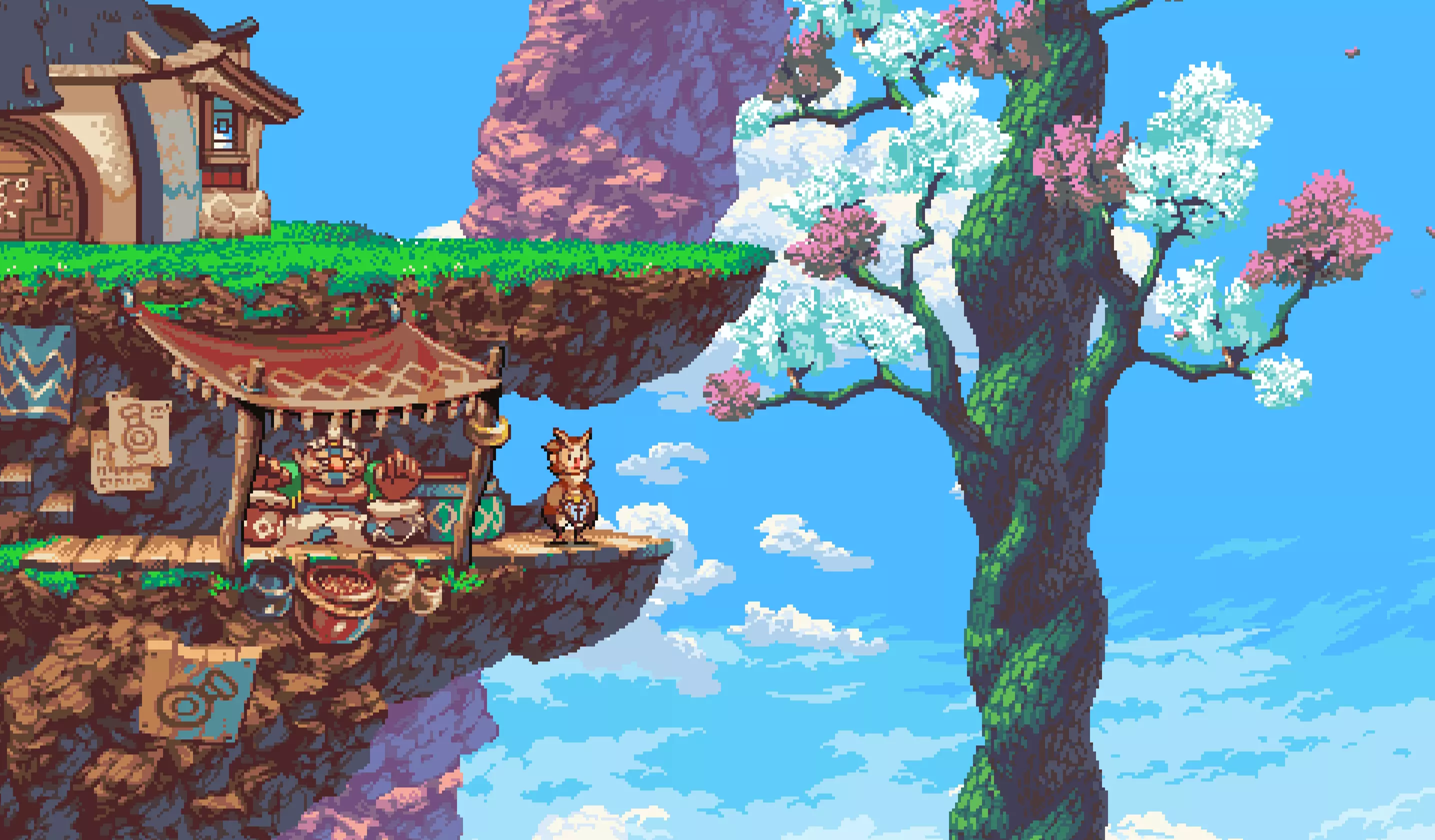Everything old is new again
For reasons geographical and circumstantial, I had never played a Dragon Quest game before the most recent entry, Dragon Quest XI: Echoes of an Elusive Age. The series didn’t make it to my then-native shores until 2006, and despite owning both Dragon Quest VII on 3DS and Dragon Quest Builders on Vita and Switch since, I have not found time for either.
Though even as huge genre fan it’s taken me a surprisingly long time to give the series a shot, I’m so glad that I finally have, as Echoes of an Elusive Age is a delightful adventure that straddles past and present mostly with elegance, and acts as an ideal series starting point.
In Dragon Quest XI, you play as the heir of Dundrasil, a child born with the mark of the luminary - a blemish that implicates him as a legendary hero reincarnated, brought back to combat an upcoming and deadly darkness. Tragedy surrounds his infancy, however, as Dundrasil is beset by demons shortly after his birth, leaving him orphaned in the tiny, rural town of Cobblestone. Adopted by a new family, he lives a normal and humble life unaware of his royal heritage and the significance of his birthmark, until he comes of age and starts displaying extraordinary power.
Thanks to a letter stashed in his bassinet, his adoptive mother knows full well the cause of his power and importance. After revealing the truth, she sends him to nearby Heliodor for training as per custom for Dundrasil princes where, rather than being welcomed as a beacon of hope, he’s labelled as darkspawn and blamed for all the evil befalling the world. He becomes a fugitive, and it’s here his adventure begins proper as he travels the world, searching for the strength to tackle the true threat.
If the core premise sounds cliché, it’s because it absolutely is. Dragon Quest XI doesn’t offer any earth-shattering surprises in its main storyline, content to stay the weathered path of ‘The Chosen One’ and the genre rhythms that come with it. Does that make it bad? Not at all, because the moment-to-moment plot points–powered by a wonderful cast of characters–help to overcome any sense of having done this before.
I mean, the luminary is unashamedly the typical RPG blank-slate, named by you and mute throughout most of the adventure, but this allows other party members to take the spotlight, and take it they do. It’s their plights and backstories that become the real meat of the adventure as you march from town to town, and I was never more absorbed than when learning more about them and seeing their personal stakes weave into the overarching plot.
To be fair, these characters also begin as genre stereotypes–you have the boorish yet noble thief in Erik, a mysterious martial artist in Jade, and an abundantly charming showman with Sylvando–and so all the RPG checkboxes are well and truly ticked. Yet it’s how my expectations were intelligently subverted within those archetypes that left me impressed. Sylvando, particularly, is a terrific example of this, and swiftly became my favourite party member.
While it’s never explicitly stated, it’s strongly implied that Sylvando is gay, conveyed only through flamboyancy, effeminate mannerisms and a penchant for calling everyone ‘darling’. That description may raise an eyebrow, and it should, I too feared that he would only be remembered as a lazy, offensive caricature played for cheap laughs, but thankfully that wasn’t the case at all. This setup is, in fact, the point, as the expectations borne from it are flipped through brilliantly human moments.
In Sylvando’s case he’s absolutely respected and welcomed by everyone he meets, both as a person and as a skilled fighter, and though there are jokes surrounding his personality, he’s never the butt of them. Instead, the jokes focus on his ability to spread joy in the darkest of times and the tonal contrast that comes with it. It’s never done with anything but kindness in mind and, at times, it’s positively heart-warming. This is especially true when the story tackles his prickly relationship with his father.
I’m completely aware that my opinion on this as a straight man may well be worthless, but to me–and others may disagree, that’s fine too–the end more than justified the means. And it’s that level of character exploration that kept me invested throughout, rather than the tale of good versus evil.

All these interactions are driven by some excellent vocal performances that are, without a doubt, some of the finest I’ve heard in translated, Eastern-developed games. Everyone perfectly suits the family friendly, quaint nature of Dragon Quest XI’s general presentation, which is also just a delight on every level.
With art and character design from Dragon Ball artist Akira Toriyama, Dragon Quest has always been more cartoon-like in its design than the other big series that matches its prestigious heritage, and it’s something Dragon Quest XI persists with and modernises. The world is rich with bright, vibrant colours across its every inch, but with a level of detail that not only means that each vista feels like a real, living place but also makes the explorable world feel much larger than it really is. Instead of contrasting against these gorgeous backdrops, characters truly feel like part of the world they inhabit. You know what? I’d happily watch an animated movie that has these production values.
It’s in exploring the world and battling its dangers that Dragon Quest XI is at its most old-fashioned, though everything has a modern slant. Fights play out in traditional, menu-driven, turn-based combat, for example, but you can move characters around the battle arena or swing the camera to any angle you prefer. Sadly, neither action has an effect on whether an attack hits or misses–it’s purely cosmetic–and despite enjoying the combat, a need to consider character placement could have added a lot more depth to battle strategy. That said, I don’t believe this was ever going to be that game.
Instead, depth in combat comes from the sheer range of abilities and spells you can unlock as the party levels up. Some abilities are automatically learned at certain levels, but you can also invest earned skill points on each character’s personal skill tree to focus their proficiency with certain weapons or combat styles, which then opens up further options.
Should the main character specialise in short swords and shields, or great swords for more damage? Should Veronica - the team’s diminutive, offensive mage (‘offensive’ both figuratively and metaphorically) - focus on her abilities with her great staff or use more conventional weaponry? Do you risk spreading the points thinly across everything for versatility’s sake (given you can change your equipment on the fly) and manage without some of the most powerful abilities? All this is up to you.
These choices can have an impact on the ‘Pep’ system where, after a number of fights, party members may enter a state of increased power for a handful of turns, and gives you access to some of the more powerful abilities you’ve unlocked. It’s when a few of your party members are pepped up where things get super interesting, as you can unleash massively damaging combo moves (useful against bosses particularly) or provide far more effective heals and buffs to your team, depending on the classes of those involved.
Overall, it’s a pleasingly flexible combat system with a lot of room for experimentation, especially when you consider the class overlap across the party, which lets you get really creative with tactics and party configurations.
You needn’t worry too much about making mistakes about building your characters, as you can easily reassign their skill points at any church or save statue, which is also indicative of some of the quality of life improvements that complement and streamline the old-school systems for the better.

Things like the quick-heal options outside of battle, which replenish party health in the most economical ways, are very welcome, as is the option to change your line-up before every fight, letting you tool your team for the exact foes you’re facing rather than hoping you got it right first time. You can also completely automate the actions of your party through basic behaviour settings–in fact, every new team member starts this way–although anyone remotely familiar with the genre will likely want complete control as I did. That mentality is used to decent effect, though, as new characters join you in a non-controllable capacity for a while before you’re handed the keys, which lets you get a taste of their abilities before you slot them into your party.
That level of assistance combined with the world design means that you’re never left wondering what to do so, smartly, you’re always driving forward. Each area gently and naturally leads you where you need to go, thanks to its familiar pattern of finding a town with a problem, solving the problem, and then moving on to the next region to start the cycle again. Don’t worry, you’re still left with plenty of scope to explore and find secrets along the way. Should you find yourself stuck or directionless, the area map can flat out state your next destination if you wish, while inside city walls, any NPC marked by a pink dot will make it abundantly clear who or what you should be looking for while there. These helpful elements are never forced on you or shoved in your face but are simply there if and when you need them.
Despite all the pleasant ways that Dragon Quest XI strives to make your life easier, it holds desperately onto some old-school design in a bunch of areas that jar against its modernisations. The menu system is a little clunky, for example, with useful options hidden further steps away than I’d like, even for something as important as its skill trees. Another example is item management: Rather than having one communal item storage that you can pull from in battle, you need to make sure desired items are assigned to each character’s paltry personal storage space. This does, admittedly, add a layer of strategy in making sure everyone is suitably equipped, but it takes too long to organise in these menus, even for someone like me that typically loves micromanagement in his RPGs.
That doesn’t matter quite as much when you start getting access to some of the more powerful healing abilities and, to that end, the balanced pacing helps to combat some of that clunkiness. Early on, I began my usual trick of mindlessly over-grinding to keep ahead of a difficulty curve that was really not that steep at all. Mammoth grinding sessions are not required as you’re kept riding the edge of Dragon Quest XI’s difficulty, as it challenges but never feels obnoxious or impossible. Only twice did I absolutely need to stop for a short time to grind a few levels, and that was more than enough to turn a problem battle in my favour.
While I enjoyed the relaxed pace, others looking for a proper challenge may not find the main campaign to be wholly satisfying and will no doubt look towards the post-game which, by all accounts, ups the stakes significantly. I’ve only dabbled in the post-game so far, as I was more than satisfied by the first ending after 80+ hours, because it already felt like a contained and complete story. The extra content is on my mind as something to return to later, though, thanks to the way it sets up to do interesting things within the confines of the original plot.

Verdict
Dragon Quest XI: Echoes of an Elusive Age is one of those rare games where the strap line isn’t merely a vapid differential (‘Revelations’, I’m looking at you), but is instead an actually accurate reflection of the magical adventure it took me on, and its mechanical makeup.
Though its classic structure and systems can be both blessing and curse when set against its many polished modernisations, it’s the flexible combat, comforting rhythm and relaxed pace that helped the time I spent in its beautiful world feel like no time at all. The charming and thought-provoking cast is absolutely its best feature, and it’s their stories that will stay with me for some time to come.




